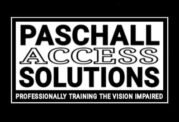What did that image look like? How about that selfie pic?
Independence should guide all of our lives, including having the ability to distinguish images, pictures, and graphics we come upon every day. Technology has advanced for the vision impaired and blind software user, even mobile device users by the way of optical character recognition….
For sighted individuals, images are an essential part of our daily lives, from social media to news articles to work presentations. But for those who are blind or visually impaired, accessing visual information can be a challenge. One important aspect of visual information is the description of pictures, which can be particularly difficult for those who are blind. However, there are several ways that blind individuals can get descriptions of pictures.
Image Descriptions
Image descriptions are text descriptions of visual content that describe what is happening in the picture. These descriptions are essential for blind and visually impaired individuals who cannot see the image and rely on the description to understand its content. Image descriptions can be written by sighted individuals, but many blind individuals prefer to write their own descriptions to ensure that they accurately reflect their understanding of the image.
Screen Readers
Screen readers are software programs that read out the content of a computer screen to blind and visually impaired individuals. Most screen readers are able to read text, but some also have the ability to read image descriptions. When a screen reader encounters an image on a web page, it can read the alt text associated with the image. Alt text is a short description of the image that is added by the person who uploaded it to the web page. If the alt text is descriptive enough, it can provide the blind individual with a good understanding of what is happening in the picture.
Audio Description
Audio description is an alternative to image descriptions that involves a spoken commentary that describes what is happening in a video or movie. This commentary is typically added to the soundtrack of the video or movie and describes the visual content that is happening on the screen. Audio description is particularly useful for blind individuals who want to watch movies and television shows, as it allows them to follow the action and understand what is happening without relying on visual cues.
Braille Printing
Another way that blind individuals can access descriptions of pictures is through braille printing. Braille is a system of raised dots that blind individuals can read with their fingers. Many images can be translated into braille, either through embossing or by using a tactile graphic. Tactile graphics are raised representations of images that can be read by touch. Blind individuals can use a combination of braille and tactile graphics to get a detailed understanding of the visual content.
Conclusion
In conclusion, there are several ways that blind individuals can get descriptions of pictures. Image descriptions, screen readers, audio description, and braille printing are all effective methods that allow blind individuals to access visual content. While visual information can be a challenge for blind individuals, these methods can help make the world a more accessible place for everyone.
